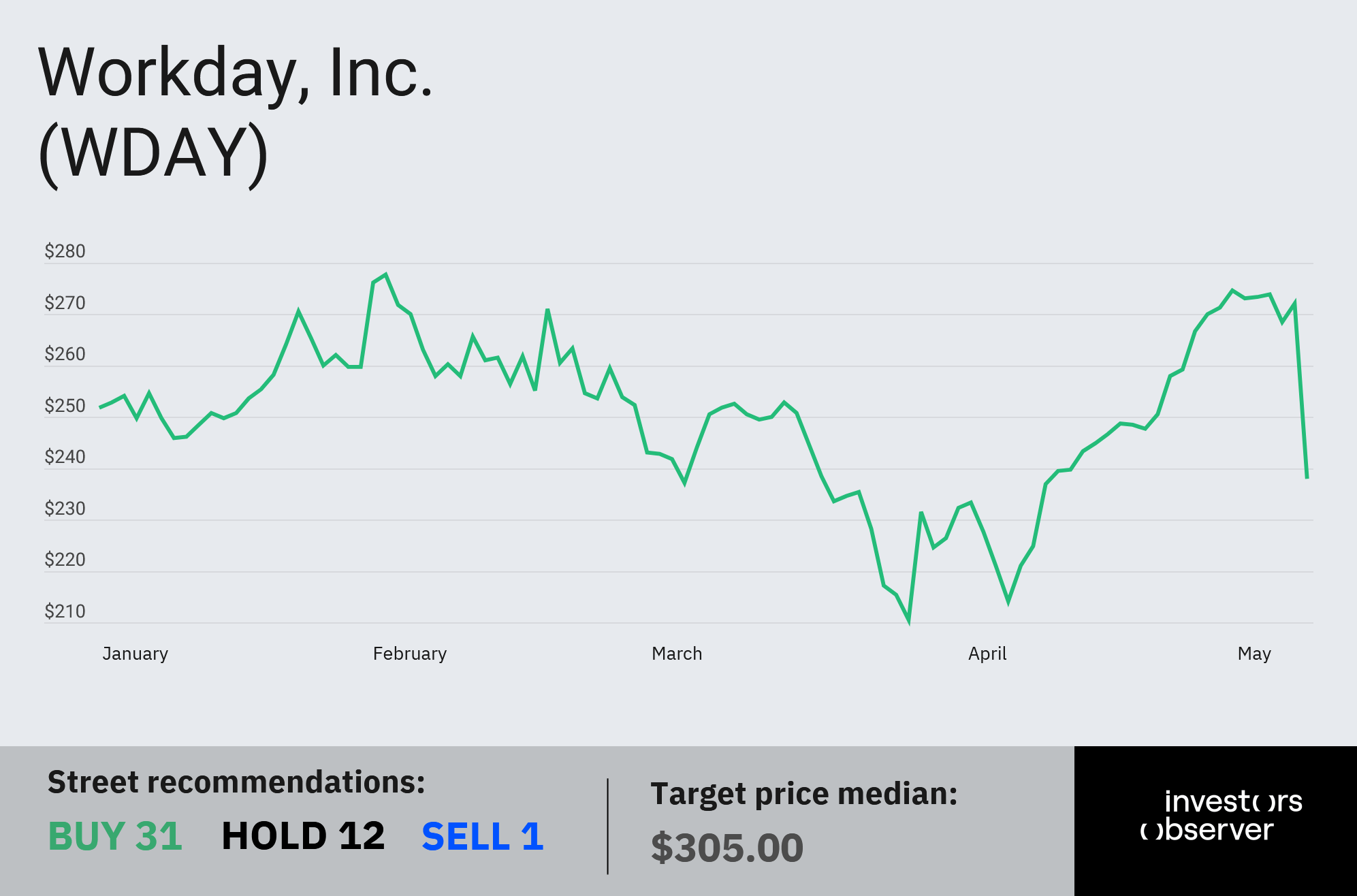
Workday (WDAY) stock fell 12.5% on Friday despite beating earnings, which underscores growing investor unease over the company’s legal and political headwinds.
The enterprise software giant, best known for powering job applications and back-end systems at major corporations, is now facing scrutiny on multiple fronts.
A new lawsuit in California is accusing Workday’s AI hiring tools of discriminating against older applicants, while the Trump administration’s renewed campaign against higher education funding threatens one of Workday’s key industry verticals.
Workday's AI-powered screening software has become a gatekeeper for job seekers across America. But according to a collective action lawsuit filed in federal court, the company's technology may be unfairly locking some of those job seekers out.
Plaintiff Derek Mobley claims Workday’s automated systems rejected him from over 100 jobs over a seven-year span “because of his age, race and disabilities.”
He’s now joined by four additional plaintiffs, all over 40, who allege that Workday’s algorithms contain built-in age bias.
Court documents say the software “disproportionately disqualifies individuals over the age of forty (40) from securing gainful employment,” and a federal judge has already issued a preliminary order allowing the case to move forward as a collective action.
Workday has denied the claims. In a statement to CNN, a company spokesperson said Workday is “confident that once Workday is permitted to defend itself with the facts, the plaintiff’s claims will be dismissed.”
The case, however, has brought attention to the risks of AI-powered decision-making in hiring. The ACLU has warned that these systems can encode and amplify existing biases, even when companies believe they’re operating fairly.

Trump’s war on colleges hits Workday’s core business
While the lawsuit has made headlines, investors appeared more focused on the company’s guidance, which wasn't exactly rosy.
For the first quarter of fiscal 2026, Workday reported revenue of $2.24 billion, up 12.6% from the year prior. Earnings jumped 28% to $2.23 per share.
The company reiterated full-year subscription revenue guidance of $8.8 billion.
But despite the upbeat numbers, Workday CEO Carl Eschenbach flagged the growing risk of the federal government’s crackdown on university funding.
“Our higher education vertical remains strong,” Eschenbach said. “At the same time, we also know there is some headwind in that industry based on some of the grants and some of the funding they get from the federal government.”
He added that the shift “didn’t necessarily have an impact on us in Q1” but said it’s something the company is watching closely.
The Trump administration is pushing a plan to hike taxes on college endowments, slash education tax credits, and cap federal funding.
The move has already rattled credit markets. Moody’s cut its outlook for the higher education sector from “stable” to “negative” in March, citing “potential federal policy changes” that could destabilize operations.
That matters for Workday. Higher education is one of its biggest institutional customers. If funding dries up, those institutions could start tightening their own budgets, including software spending.
And it’s not just colleges at risk. Eschenbach noted that many hospitals in the U.S. are linked to university systems, which could create “adjacent” headwinds in the healthcare vertical as well.
What happens next?
The lawsuit may take years to resolve, and Workday insists it will prevail.
But the risks tied to Washington’s shifting budget priorities are harder to contain and may have a more immediate impact on earnings.
Between legal questions around AI, political uncertainty around education funding, and a broader investor pullback from high-valuation tech stocks, Workday’s once-reliable growth narrative is facing a new round of stress testing.
Whether the company can weather the storm may depend less on what happens in court and more on what happens in Congress.
Your email address will not be published. Required fields are markedmarked